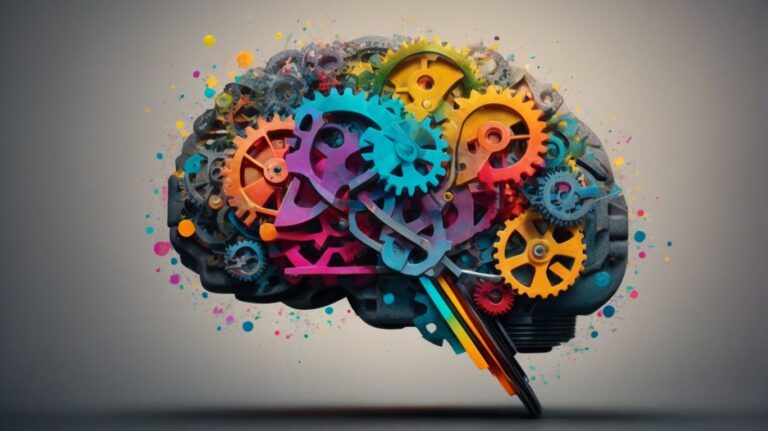Perception is a fascinating aspect of psychology that plays a crucial role in how we interpret and interact with the world around us. In this article, we will explore the concept of perception, its various stages, factors that influence it, and the different types of perception such as visual, auditory, gustatory, olfactory, and tactile.
We will discuss how perception can impact behavior and its applications in understanding mental health disorders, improving communication, and enhancing decision-making skills. Join us as we delve into the intriguing world of perception in psychology.
Contents
What Is Perception?
Perception, in psychology, refers to the process of recognizing and interpreting environmental stimuli through our senses and cognitive functions.
Our senses play a crucial role in collecting information from the environment, including sight, hearing, taste, smell, and touch. This sensory input is then processed by our cognitive functions, such as attention, memory, and language, to make sense of the world around us. The significance of sensory experience lies in its ability to shape our psychological understanding and behavior. For instance, how we perceive a situation can influence our emotional responses and decision-making processes.
How Does Perception Work?
Perception operates through intricate neural processing mechanisms that involve the interpretation, recognition, and organization of stimuli based on existing schemas.
When stimuli enter the sensory organs, they are converted into neural signals that travel through specialized pathways to the brain, where the process of interpretation begins.
Neural networks play a crucial role in filtering and processing this influx of information, leading to the identification of familiar patterns and objects. These recognized patterns are then matched against stored knowledge in the form of schemas, which are mental frameworks that help us make sense of the world around us. The brain utilizes these schemas to organize and interpret incoming stimuli, shaping our perceptual experiences in profound ways.
What Are The Three Stages Of Perception?
The three stages of perception, as proposed by Gestalt psychologists, encompass physiological processes, transduction of stimuli into a visual image, and the conscious experience of information processing.
During the first stage of perception, physiological processes involving sensory organs such as the eyes, ears, and skin, play a crucial role in detecting external stimuli.
Next, the transduction of these stimuli into a coherent visual image occurs, where the brain interprets the raw sensory data received.
In the third stage, the processed information is consciously experienced and organized, guided by principles such as proximity, similarity, closure, and continuity, which are central to Gestalt psychology.
What Factors Influence Perception?
Perception is influenced by various factors including social cues, selective stimuli, personality traits, and subconscious processes triggered by environmental stimuli like racial profiling.
These factors intertwine to form a complex web that shapes how individuals interpret and make sense of the world around them. Social cues, such as body language and societal norms, play a significant role in determining how one perceives others and situations. Similarly, selective stimuli filter the overwhelming amount of information received to focus on what aligns with existing beliefs and attitudes.
Personality traits also come into play, affecting what aspects of stimuli are prioritized and remembered. The subconscious mind processes information in ways that can lead to biases, like in the case of racial profiling, where preconceived notions influence perception without conscious awareness.
Past Experiences
Past experiences play a pivotal role in shaping perception, influencing our attitudes, mental structures, intra-personal communication, and subsequent behavioral responses.
These experiences serve as the building blocks of our cognitive framework, molding how we interpret the world around us and interact with others. Past encounters create a lens through which we view new situations, affecting our decision-making processes and influencing our responses to various stimuli. Our perceptions are intricately woven with memories, emotions, and cultural influences, forming a complex tapestry that guides our understanding of the self and the external environment.
Expectations
Expectations significantly influence perception, affecting first impressions, communication skills, susceptibility to perceptual disorders, and responses to physical influences.
When an individual enters a new social setting, their expectations can color how they perceive others, shaping their initial reactions and judgments.
These first impressions often set the tone for subsequent interactions, highlighting the power of preconceived notions in shaping social dynamics.
Communication skills can be either enhanced or hindered by the expectations individuals hold.
Expecting open-mindedness and receptiveness can lead to more effective exchanges, while biased assumptions can create barriers to understanding.
Culture
Cultural influences and societal norms significantly shape perception by introducing social and cultural factors, generating visual illusions, posing ethical challenges, and being influenced by environmental factors.
One of the ways in which culture impacts perception is through the social and cultural factors that individuals are surrounded by. These factors can include language, beliefs, values, and customs that shape how individuals interpret the world around them.
Visual illusions also play a role in perception, as cultural backgrounds can affect how people perceive and interpret optical illusions. The ethical challenges within cultural contexts can vary widely, highlighting the importance of understanding different cultural perspectives to navigate these complexities.
Emotions
Emotions play a crucial role in influencing perception, as evidenced by peer-reviewed studies conducted by medical reviewers that explore the impact of emotional cues, behavioral responses, and environmental influences.
These studies have shown that emotions such as fear, happiness, and anger can significantly alter how individuals interpret and react to their surroundings. For example, a person in a state of fear may perceive harmless stimuli as threatening, leading to a heightened stress response. The complex interplay between emotions and perception underscores the intricate nature of human cognition.
What Are The Types Of Perception?
Perception manifests in various forms including visual signals, auditory cues, gustatory experiences, olfactory sensations, and tactile feedback.
Each type of perception plays a crucial role in how we interact with our environment and make sense of the world around us.
- Visual signals allow us to see colors, shapes, and movements, providing essential information for navigation and object recognition.
- Auditory cues enable us to hear sounds and voices, helping us communicate and perceive the surrounding events.
- Gustatory experiences involve the sense of taste, letting us enjoy different flavors and textures of food.
- Olfactory sensations capture various scents and odors, triggering memories and emotions based on smell.
- Tactile feedback provides information through touch, such as temperature, pressure, and texture, enhancing our physical interactions with objects and surfaces.
Visual Perception
Visual perception involves the interpretation of visual images, influenced by mental structures, and subject to physical influences as studied in fields like facial plastic surgery.
The intricate process of visual perception begins with the reception of visual stimuli through the eyes, which then triggers a complex series of neural signals traveling to the brain for analysis.
These signals are processed in various regions of the brain where past experiences, emotions, and cultural influences interact to form our perception of the visual world around us.
Moreover, mental structures, such as schemas and cognitive frameworks, play a crucial role in shaping how we interpret and make sense of visual information.
When exploring the realm of visual perception, experts often delve into the psychological aspects that govern our visual experiences.
Auditory Perception
Auditory perception involves the processing of audio signals, influenced by self-concept, prone to perceptual errors, and shaped by environmental stimuli.
In terms of how individuals interpret sound, the self-concept plays a crucial role in determining how certain audio signals are received and understood. This means that a person’s beliefs, attitudes, and past experiences can significantly impact their ability to process auditory information accurately. In addition, auditory perception is not always flawless, as common perceptual errors, such as mishearing words or confusing sounds, can occur due to various factors.
Factors like background noise, cognitive biases, and even psychological factors can contribute to these mistakes. The environment in which the auditory stimuli are presented also plays a vital role in how they are perceived by individuals. Different settings, varying levels of noise, and even cultural influences can affect how people interpret and respond to audio signals.
Gustatory Perception
Gustatory perception pertains to the sense of taste, involving taste buds, sensory experiences, and how taste perceptions may be influenced by factors like racial profiling.
Taste buds, also known as taste receptors, play a crucial role in this sensory process by detecting flavors such as sweet, salty, sour, bitter, and umami. These tiny sensory organs are clustered on different areas of the tongue and transmit signals to the brain, contributing to the complex experience of taste.
Studies suggest that cultural background and upbringing can significantly impact an individual’s taste preferences and perceptions. Ethnic cuisine, for example, can shape one’s palate and affect how certain flavors are perceived.
Olfactory Perception
Olfactory perception relates to the sense of smell, the function of olfactory receptors, the impact of selective stimuli, and how intrapersonal communication may influence olfactory experiences.
Our sense of smell plays a crucial role in our daily interactions with the environment, allowing us to perceive various odors that can trigger a myriad of emotions and memories. The olfactory receptors in our nasal cavity are specialized sensory cells responsible for detecting these odors and sending signals to the brain for interpretation.
Selective stimuli can significantly affect how we perceive smells, as certain scents may evoke pleasant or unpleasant responses based on individual preferences. Intrapersonal communication, our internal dialogue and emotional responses, also closely intertwine with olfactory experiences, influencing how we perceive and react to different smells.
Tactile Perception
Tactile perception refers to the interpretation of touch sensations, incorporating proprioception, influencing behavioral responses, and potentially shaping first impressions.
These sensations play a crucial role in how an individual interacts with the environment, allowing them to distinguish between various textures, temperatures, and pressures. Proprioception, which is the body’s awareness of its position in space, enhances one’s ability to move gracefully and perform tasks seamlessly. In terms of behavioral responses, tactile experiences can trigger emotional reactions, influence decision-making processes, and even lead to changes in social interactions.
How Does Perception Affect Behavior?
Perception directly impacts behavior by guiding actions, organizing information into schemas, categorizing stimuli, and enabling recognition of familiar patterns.
Perception serves as the lens through which individuals interpret the world around them, influencing their decisions, responses, and interactions with their environment.
By shaping how we process sensory information, perception contributes to the formation of attitudes, beliefs, and biases, which ultimately influence our behavioral tendencies.
Moreover, schemas play a crucial role in streamlining our cognitive processes by acting as mental frameworks that help us make sense of complex information more efficiently.
What Are The Applications Of Perception In Psychology?
Perception in psychology finds applications in understanding mental health disorders, improving communication skills, and enhancing decision-making processes, as evidenced by peer-reviewed studies.
The way individuals perceive their surroundings plays a crucial role in shaping their mental well-being. Research indicates that distorted perceptions can contribute to the development of various mental health disorders, such as anxiety and depression.
Furthermore, perception also impacts how individuals communicate with others. By understanding how perception influences communication, individuals can enhance their ability to convey messages effectively and build stronger relationships.
Studies have shown that perception plays a vital role in decision-making skills. People’s perceptions of risks and benefits can significantly influence the choices they make, both in everyday situations and high-stakes scenarios.
Understanding Mental Health Disorders
Perception plays a crucial role in understanding and addressing mental health disorders as highlighted by the American Psychological Association and Principles of Social Psychology, focusing on behavioral cues and perceptual filters.
Our perception of others and their behaviors can significantly influence how we interpret and respond to mental health conditions. According to research, individuals with mental health disorders may exhibit subtle behavioral cues that can be easily overlooked by those who are not attuned to them. These cues, such as changes in speech patterns or body language, are essential in recognizing the presence of a mental health issue. Our perceptual filters shape how we perceive and make sense of these cues, affecting the accuracy of our understanding and response.
Improving Communication and Relationships
Enhancing perception can lead to improved communication skills and better relationships by understanding social cues, social and cultural factors, and adapting behavioral responses accordingly.
Perception plays a crucial role in how we interpret the world around us and interact with others. It influences not just what we see but how we interpret it, affecting our communication in subtle ways. By being attuned to social cues such as body language, facial expressions, and tone of voice, individuals can better understand the underlying emotions and intentions of others.
Cultural factors further shape our perceptions and communication styles. Different cultures have varied norms, values, and communication patterns, which can lead to misunderstandings if not acknowledged and respected. By being aware of these cultural influences, individuals can adapt their communication approach to bridge potential gaps and foster understanding.
Enhancing Decision Making and Problem Solving Skills
Perception aids in enhancing decision-making and problem-solving skills by navigating ethical challenges, addressing issues of selective perception, avoiding pitfalls like racial profiling, and considering physical influences.
In terms of decision-making, perception acts as a filter through which individuals interpret and make sense of the world around them. One’s perception influences the way information is received and processed, shaping thoughts, beliefs, and actions. For instance, individuals with a perception biased towards a certain ethnic group may unintentionally engage in racial profiling, leading to unjust treatment and biased decisions. Physical influences, such as fatigue or hunger, can distort perception and impact decision-making abilities.
Frequently Asked Questions
What is the importance of perception in psychology?
Perception plays a crucial role in psychology as it helps us understand how we make sense of the world around us and how we interact with others. It influences our thoughts, feelings, and behaviors, making it a vital aspect of human psychology.
How does perception affect our behaviors?
Our perceptions can greatly influence our behaviors, as they shape our understanding of ourselves, others, and the world. For example, if we perceive a situation as dangerous, we may behave cautiously or avoid it altogether.
Can perception be altered or changed?
Yes, perception can be altered or changed through various factors such as experience, culture, and emotions. Our perceptions are not fixed and can be influenced by new information and perspectives.
Why is studying perception important in psychology?
Studying perception helps us understand the complex processes that occur in our minds, allowing us to gain insight into human behavior and cognition. It also helps us identify how different factors can influence our perceptions.
How can perception impact our relationships?
Our perceptions of others can greatly impact our relationships with them. For instance, if we perceive someone as rude or unfriendly, we may act differently towards them, leading to conflicts or misunderstandings.
Is perception the same for everyone?
No, perception is subjective and can vary from person to person. Our individual experiences, beliefs, and biases can all influence our perceptions, making them unique to each individual.



